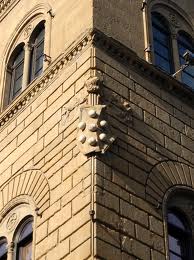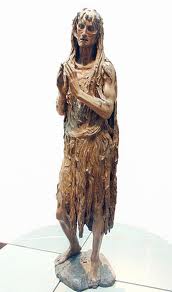After arriving in Florence by train on Saturday evening, we set about exploring the new city early the next morning. Cars become a novelty after the turquoise canals of Venice, and it took a while to get used to stony streets again.
In Venice we went on several ‘Church crawls’ and focused predominantly on the religious aspects of Venetian painting. By contrast, in there seems to be a heady mixture of religion and politics pervading the art and architecture of Florence. This was obvious early on the first morning, when we found ourselves in front of Botticelli’s Venus, and his Primavera, on our trip to the Uffizi. Mythology began to infiltrate our study of art for the first time and this culminated in a colourful and imaginative session on mythology one evening, with everyone allocated a god or goddess (the birthday girl, Emma, being Hera of course). We began raiding each other’s wardrobes and the shops of Florence for costumes. The most memorable, I think, was cupid, resplendent in a toga fashioned out of a dressing gown, and a bow and arrow purchased from the Disney store.
The Medici coat of arms, brandished in nearly every church and on nearly every monument is also testament to the nature of the Florentine Republic, essentially governed by this powerful family. In contrast to Venice, the influence of the Medici seems almost to rival that of the Church. In line with this, there are references to the political and literary geniuses that also make up Florence’s incredible history: Dante’s house is a short stroll from the Duomo, and Galileo, Michelangelo and Machiavelli all lie in the landmark Santa Croce church.
Another tangible difference between Florence and Venice I think, is the importance of sculpture to the Florentine Renaissance. Two works stood out to me from all others – that of Magdalene Penitent by Donatello, and, of course, David by Michelangelo. After a short background talk on the life of Mary Magdalene, seven of us sat in silent awe for several minutes, confronted with the harrowing, earthly beauty of the wooden sculpture. When compared to the idealised, hyperbolic marbles and bronzes that inhabit the Bargello, The Magdalene hit an emotional, human note.
David came the following day. Walking up an aisle lined with Michelangelo’s series Slaves, we reached a
light dome under which he was stood. Witnessing the sculpture first hand confirms that books can only teach you so much. The physical nature of sculpture is something to be experienced, and can communicate so much with the beholder. The scale of the body and shine of the marble, with contoured, sinuous lines highlighting idealised muscles, the sculpture almost palpitates – with veins, bones and sinews visible underneath the stone hands and neck. Made after the Medici were (temporarily) exiled from Florence, this work epitomises how Florentines used biblical themes to symbolise political values in their art. Whether religious or not, the adding of a political to a Christian message makes the piece ever-relevant, as the values it embodies remain essential to the secular societies of today – freedom, defiance and strength in the face of a greater oppressive power.
light dome under which he was stood. Witnessing the sculpture first hand confirms that books can only teach you so much. The physical nature of sculpture is something to be experienced, and can communicate so much with the beholder. The scale of the body and shine of the marble, with contoured, sinuous lines highlighting idealised muscles, the sculpture almost palpitates – with veins, bones and sinews visible underneath the stone hands and neck. Made after the Medici were (temporarily) exiled from Florence, this work epitomises how Florentines used biblical themes to symbolise political values in their art. Whether religious or not, the adding of a political to a Christian message makes the piece ever-relevant, as the values it embodies remain essential to the secular societies of today – freedom, defiance and strength in the face of a greater oppressive power.

Michelangelo's David: 'Witnessing the sculpture first hand confirms that books can only teach you so much'.
Religion may always impress – and we have much to thank it for in terms of the culture it has produced – but in Florence, the fusion of religion with a very human and gripping political history makes it a city vibrant with both the divine and the earthly.





[…] http://blog.arthistoryabroad.com/uncategorized/news-from-italy-aha-student-helena-roy-muses-on-what-… Share this:TwitterFacebookLike this:Like Loading… Category : All Posts, History of Art, Other […]